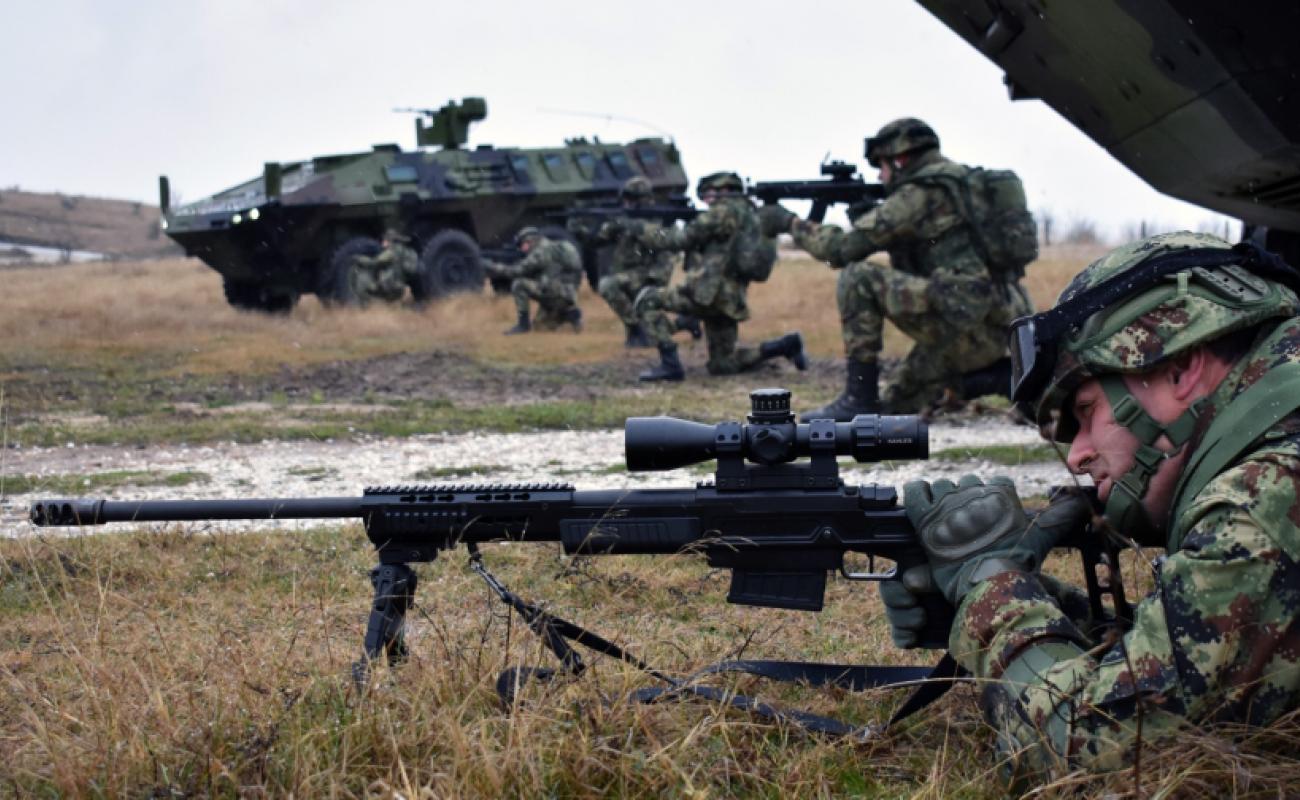Arms race in the Balkans: Serbia leads with weapons from China, Russia and Belarus

Despite international sanctions against Moscow for its aggression against Ukraine, it was announced on Wednesday that Serbia has received another arms delivery from Russia. It is a Russian system for electronic blocking of drones, known as Repellent, which was presented by the President of Serbia, Aleksandar Vučić.
Over the last decade, Serbia has increased its spending on the purchase of new and sophisticated weapons, becoming one of the 40 largest importers in the world. According to the SIPRI Institute, Serbia ranks 37th in the world for arms purchases in the period 2018-2022, with spending for this purpose increasing by as much as 743% compared to the period 2013-2018. Serbia’s largest arms suppliers are China with 43%, Russia with 30% and Belarus with 20%.
According to the Institute, Serbia is the record holder in the Western Balkans in terms of armaments, leaving NATO member Croatia behind. According to indicators of the flow of weapons systems and subsystems, which SIPRI uses to track the armament of states, Serbia has seen an exponential increase in arms purchases from 2016 onwards, peaking in 2022.

At Balkan level, only Croatia is in an arms race with Serbia. In 2021, Croatia decided to buy twelve second-hand Rafale fighter jets from France for almost 1 billion euros to replace its aging fleet of Soviet-era aircraft and strengthen its air combat capabilities.
The arms race problem in the Balkans began in 2015 when Croatia asked the United States to donate 16 Lockheed Martin-made M270 multiple launch rocket systems equipped with ballistic missiles. The current Serbian President and then Prime Minister Aleksandar Vučić responded by stating that his country “had to find an answer”. He sought the answer in Russia, whereupon Moscow promised to donate a model of the Russian S-300 missile defense system in January 2016. Neither Croatia nor Serbia received the requested aid. However, in April 2022, Serbia secretly purchased a Chinese air defense system, an increase in capacity for the Serbian military one month after the start of Russian aggression in Ukraine. Serbia has also purchased 30 European and Russian combat helicopters, Chinese drones, Israeli anti-tank missiles and French air defense systems.
Meanwhile, Croatia bought 12 German planes, 16 American helicopters, American missiles and modernized 76 ground combat vehicles. In terms of heavy combat mechanisms, however, Serbia and Croatia are still within the limits agreed in the 1995 Dayton Agreement.
As a NATO member, Albania has invested very little in defense and is therefore not involved in the regional arms race. However, it seems that this period is over. Almost 1 billion euros from the Albanian budget is to be spent on the purchase of new weapons and the modernization of existing weapons in the period 2022-2028. This amount will be used for the purchase of ammunition, armaments, air warfare systems, drones from Turkey and a transponder system worth over 30 million euros, which will be installed in Blackhawk helicopters. As a result, 27% of the annual budget is invested in defense, in contrast to 2019, when this investment was only 9.8%.
Kosovo also appears to be entering the arms race from 2022. In the last two years, Europe’s youngest country has increased the number of its soldiers by 80% and defense spending by 100%. In 2023, Kosovo purchased drones from Turkey and then requested the purchase of 246 Javelin anti-tank missiles and other types of weapons from the US, which were not disclosed by the Pristina government.
North Macedonia, which joined NATO in 2020, has a ten-year defence modernization plan that includes spending of 1 billion euros. The aim is to replace the old Soviet and Yugoslav weapons with new Western-made ones. By 2032, it is planned to purchase 8 Western-made multi-purpose military helicopters to replace the 12 Mi-24 helicopters donated to Ukraine. This will be the largest purchase of military equipment since 2001, when North Macedonia was involved in an armed conflict. Instead of tanks, North Macedonia has already signed contracts for the purchase of JLIV light armored wheeled vehicles and Stryker armored personnel carriers from the US. In addition, the company is currently purchasing light armored vehicles from Turkey and Javelin anti-tank systems, Boran vehicles from Turkey, Mistral 3 anti-aircraft systems from France and other types of equipment.
Equipping Albania, North Macedonia and Montenegro with new weapons is seen in terms of fulfilling NATO’s defense investment commitments of at least 2% of gross domestic product (GDP). On the other hand, the arming of Serbia, especially after the start of the invasion of Ukraine by Russia in early 2022, is seen by the West as a dangerous potential that could trigger another war in the Balkans, with the aim of diverting attention away from Ukraine .
Serbia is the only European country that has not imposed sanctions against Russia and continues to sign cooperation agreements with Moscow. Although Belgrade has started the process of accession negotiations with the European Union (EU) since 2014, it has not harmonized the EU’s foreign policy towards Russia and refuses to impose the Union’s sanctions.
In addition to Croatia, Vučić also cites the threat from Kosovo to justify the increasing purchase of weapons for the Serbian army. “If someone would try to carry out an aggression against Serbia, as it happened in 1999, technically they would not be able to do it in the same way,” he said, alluding to the NATO intervention in 1999, when Serbia was attacked to stop the humanitarian catastrophe caused by Slobodan Milosevic’s regime in Kosovo.
To prevent a serial escalation of the situation, the US and the EU are calling for all arms purchases to be made transparent and for European integration, i.e. the promotion of regional cooperation, to be placed at the focus of all countries in the region.
Writtes: Xhelal Neziri, editor and associate of The Geopost from North Macedonia
